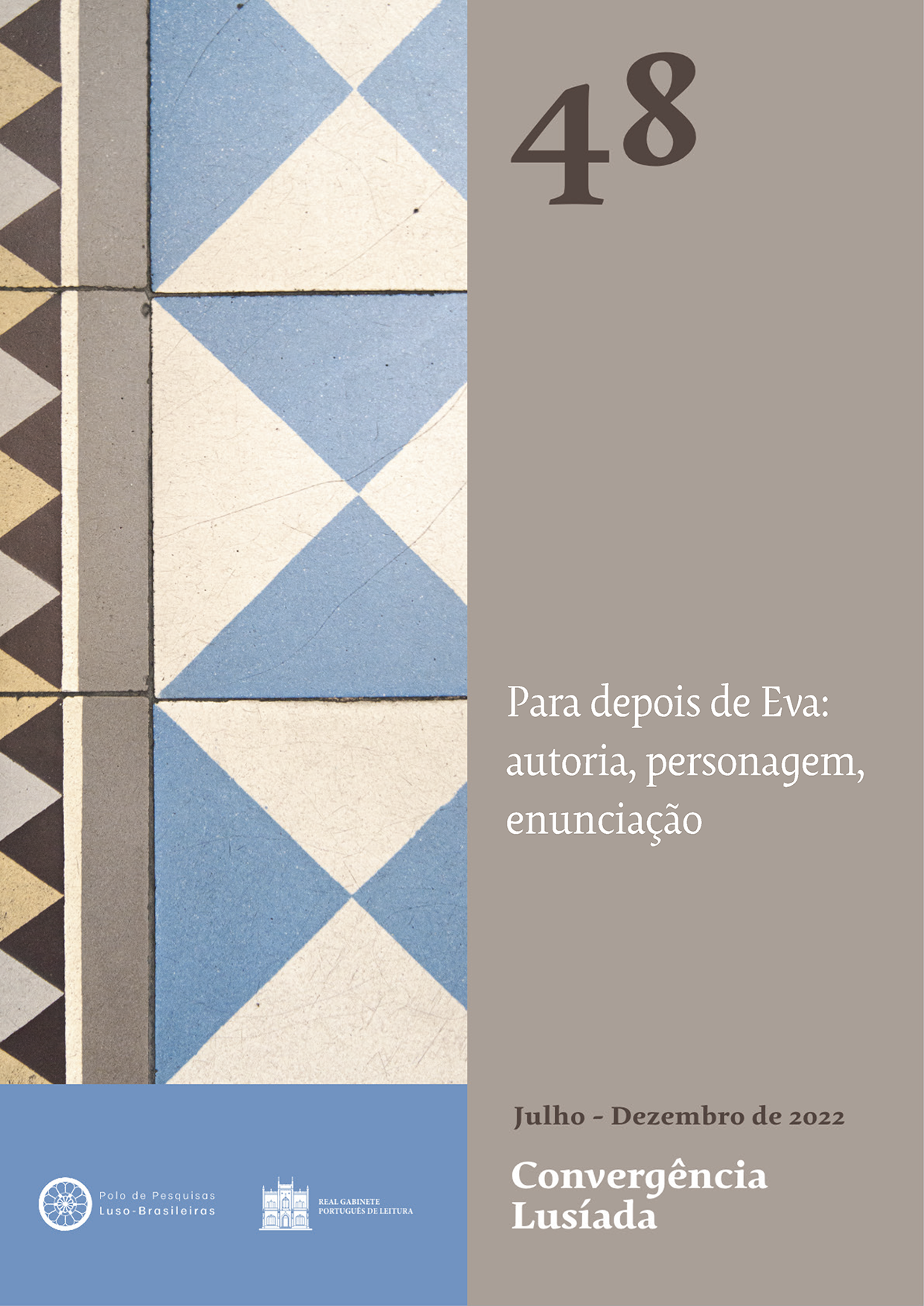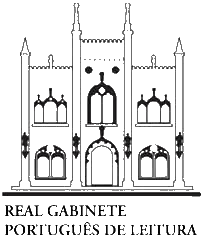For an “anti-mónica” poetics: Sophia de Mello Breyner Andresen and the representations of the female(s)
DOI:
https://doi.org/10.37508/rcl.2022.n48a496Keywords:
Sophia de Mello Breyner Andresen, representation(s) of the feminine(s), anti-Monica poeticsAbstract
This text aims to analyze the narrative “Retrato de Mónica” [Portrait of Mónica] — Contos exemplares — [Exemplary tales], by Sophia de Mello Breyner Andresen, in an attempt to understand a poetics that we will call “anti-Mónica”. It is worth remembering that, in “Retrato de Mónica” [Portrait of Mónica], the naming character of the title is closely linked to the “Príncipe deste Mundo” [Prince of this World] — a possible pseudonym for Nazi-fascist dictators. For Mónica, according to the narration, “é o seu maior apoio, o mais firme fundamento do seu poder.” (ANDRESEN, 2015, p.137) [is his greatest support, the firmest foundation of his power.]. In this sense, as Sophia’s work presents a continuum between the dimensions of aesthetics/ethics and justice/fairness, that is, the author does not refuse to give “testimony”, in the manner of Jorge de Sena, of her time, Mónica — as a crystallized representation of a certain feminine within Andresen’s production — is the negation of the values that the poet seeks to convey. In this path, as we will show, if Sophia’s work is organized around the denial of this type of representation of the feminine( s), other questions arise: a) which would be the feminine representative( s) (s) more coherent(s) with the Andresenian universe; b) which one(s) would make a counterpoint(s) to the character Mónica? Therefore, it will also be necessary to analyze poems such as “Catarina Eufémia” and “Maria Natália Teutónio Pereira”, for example. Such poems present female figures who, like Antigone, refuse/refuse the role of “female” and fight/fought in the name of freedom. That’s why they overcame destruction and transcended human immanence itself: they lifted their laughter in the wind — to paraphrase a verse by Sophia.
Downloads
References
“ALGUMA coisa de tão forte dentro de nós”: Maria Natália Duarte Silva Teotónio Pereira (1930-1971). Sete Margens. Disponível em: https://setemargens.com/alguma-coisa-de-tao-forte-dentro-de-nos-marianatalia-duarte-silva-teotonio-pereira-1930-1971/. Acesso em: 16 set. 2022.
AMARAL, Ana Luísa. Arder a palavra e outros incêndios. Lisboa: Relógio D’Água Editores, 2017.
AMARAL, Ana Luísa. Entre-cartas: paisagens com poemas, filhos, dois mares e liberdade ao fundo. In: SANTOS, Gilda et al. SENA&SOPHIA: centenários. Rio de Janeiro: Bazar do Tempo, 2020. p. 391-400.
ANDRESEN, Sophia de Mello Breyner. Contos exemplares. Lisboa: Assírio & Alvim, 2015.
ANDRESEN, Sophia de Mello Breyner. Obra poética. Lisboa: Assírio & Alvim, 2015.
ANDRESEN, Sophia de Mello Breyner. Poesia e realidade. Colóquio: Revista de Artes e Letras, n. 8, abril de 1960. p. 53-54.
ANDRESEN, Sophia de Mello Breyner. Poesia e revolução. In: ANDRESEN, Sophia de Mello Breyner. O nome das coisas. Lisboa: Círculo de Poesia, 1977. p. 77-80.
ANDRESEN, Sophia de Mello Breyner. Sophia de Mello Breyner Andresen: “escrevemos poesia para não nos afogarmos no cais...”. Jornal de Letras, Artes e Ideias. Ano 1, n. 26, de 16 fev. a 1 mar. 1982.
BENJAMIN, Walter. Magia e técnica, Arte e política. Tradução Sérgio Paulo Rouanet; prefácio Jeanne Marie Gagnebin. São Paulo: Brasiliense, 1994.
BÍBLIA de Jerusalém. Tradução equipe católica. São Paulo: Paulus, 2010.
BRANDÃO, Fiama Hasse Pais. Cenas Vivas. Lisboa: Relógio D’Água, 2000.
BUTLER, Judith. O clamor de Antígona: parentesco entre a vida e a morte. Tradução André Cechinel. Florianópolis: Editora da UFSC, 2014.
CANGUILHEM, Georges. Vie et mort de Jean Cavaillès: les carnets de Baudasser. In: ROUDINESCO, Elisabeth. — Athos, Porthos, até logo —, Aramis, para sempre, adeus! Tradução Nina de Melo Franco. Psicologia em Revista. Belo Horizonte, v. 11, n. 17, p. 115-125, jun. 2005. p. 115-125.
CATARINA Eufémia, símbolo da revolução. RTP ensina. Disponível em: https://ensina.rtp.pt/artigo/catarina-eufemia-simbolo-da-revolucao/.Acesso em: 16 set. 2022.
DIANGELO, Robin. Não basta não ser racista: Sejamos antirracistas. Tradução Marcos Marcionilo. Barueri: Faro Editorial, 2020.
KLOBUCKA, Anna M. O formato de mulher: a emergência da autoria feminina na poesia portuguesa. Coimbra: Angelus Novus, 2009.
KOTHE, Flávio. A obra literária como ruína alegórica. Tempo Brasileiro, n. 45/46, abr/set. 1975. p. 28-32.
LLANSOL, Magia Gabriela. Lisboaleipzig 1. Lisboa: Edições Rolim, s/d.
MAGALHÃES, Isabel Allegro de. O tempo das mulheres. Lisboa: Imprensa Nacional-Casa da Moeda, 1987.
MAGALHÃES, Joaquim Manuel. Rima Pobre. Lisboa: Editorial Presença, 1999
RICH, Adrienne. Que tempos são estes. Organização e tradução Marcelo Lotufo. São Paulo: Edições Jabuticabas, 2018.
ROSA, António Ramos. Incisões oblíquas. Lisboa: Caminho, 1987.
RUBIN, Gayle. Políticas do sexo. Tradução Jamille Pinheiro Dias. São Paulo: Ubu Editora, 2017.
SENA, Jorge de. Poesia I. Coimbra: Edições 70, 1977.
SÓFOCLES. Antígona. Tradução Donaldo Schüler. Porto Alegre: L&PM, 2013.
VELLOSO, Leonel Isac Maduro. Do corpo ao corpus travesti: exercícios de performatividade de gênero em Florbela Espanca, Al Berto e Margarida Vale de Gato. Revista do NEPA/UFF, Niterói, v. 13, n. 26, p. 91-104, jan.-jun. 2021. DOI: https://doi.org/10.22409/abriluff.v13i26.47427
Downloads
Published
How to Cite
Issue
Section
License
Authors who publish in Convergência Lusíada agree with the following terms:
- Authors retain copyright and grant the journal right of first publication with the work simultaneously licensed under a Creative Commons Attribution-NonCommercial 4.0 International License (CC-BY-NC 4.0) that allows others to share the work with an acknowledgment of the work's authorship and initial publication in this journal.
- Authors may enter into separate, additional contractual arrangements for the non-exclusive distribution of the journal’s published version of the work (e.g., post it to an institutional repository or publish it in a book), with an acknowledgment of its initial publication in this journal.
- Authors are permitted and encouraged to post their work online (e.g., in institutional repositories or on their website) prior to and during the submission process, as it can lead to productive exchanges, as well as earlier and greater citation of published work.

Revista Convergência Lusíada is licensed under a Creative Commons - Atribuição-NãoComercial 4.0 Internacional.









